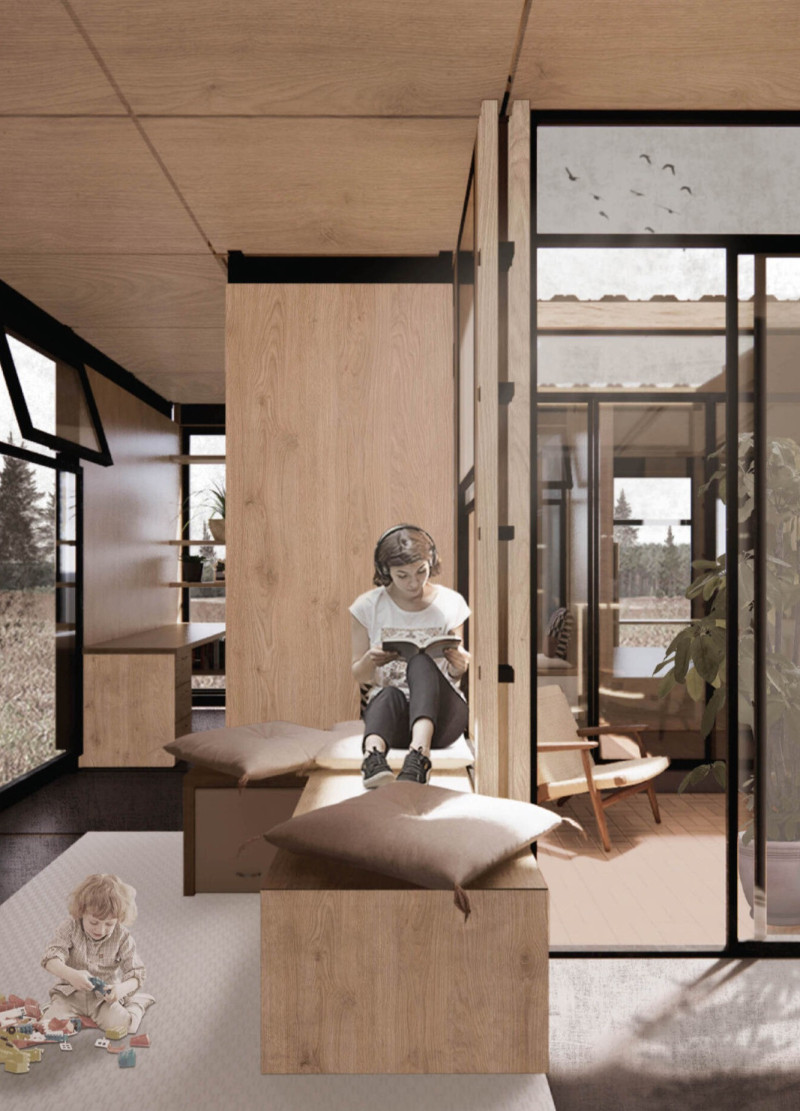5 key facts about this project
The central patio acts as a communal heart of the design, linking various functional areas, which include sleeping, working, and social spaces. Each area is purposefully designed with consideration for cross-ventilation and access, promoting both community engagement and individual privacy. This configuration reflects a nuanced understanding of how spatial relationships influence social dynamics and personal experiences.
The project's layout incorporates significant sustainable features. The use of solar panels and rainwater collection systems illustrates a commitment to environmental responsibility, ensuring minimal ecological impact. The integration of lightweight wooden beams and modular panels further facilitates a sustainable approach to construction, enabling ease of assembly and reconfiguration based on occupant needs.
Unique Design Approaches
HABITAR distinguishes itself through its modular flexibility and adaptive reuse potential. This capability allows for the reconfiguration of spaces according to the changing requirements of residents, moving beyond rigid spatial boundaries that characterize many traditional homes. The design incorporates metal flanges that facilitate structural integrity while maintaining a lightweight approach, making it easy to transport. This mobility is a key aspect, allowing for relocation or adjustment without significant disruption to the overall function of the space.
Additionally, the extensive use of glass in the façade enhances visual connections with the environment, promoting a seamless interaction between indoor and outdoor spaces. This design choice not only optimizes natural light but also supports the project's overarching theme of interconnectedness.
Sustainability in Design
The sustainable features of HABITAR are integrated seamlessly into the architectural framework. The implementation of thermal insulating materials throughout the structure maximizes energy efficiency, significantly reducing reliance on mechanical heating and cooling systems. The project focuses on resource management, with systems in place to collect and utilize rainwater, thereby promoting self-sufficiency.
The architectural plans and sections illustrate how these elements come together cohesively, contributing to a holistic approach to design. These details underscore the project's innovative adaptations, offering insights into how meaningful architecture can align with contemporary environmental responsibilities.
For a deeper understanding of HABITAR's architectural design, consider reviewing the architectural plans, sections, and detailed designs. Engaging with these elements will provide further insight into the unique ideas that have shaped this project and its approach to modern living.


























